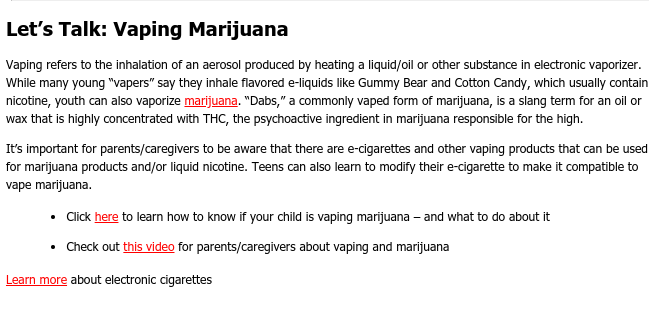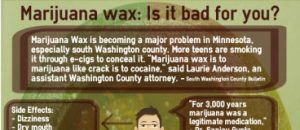EIC Column: vaping epidemic overshadows drug problem
With the recent federal “crackdown” on vaping, JUUL in particular, the vaping epidemic is no secret. The school administration has been very vocal about the problem in our school over the past few years. Furthermore, they need to be equally as vocal about the lesser known drug use in the bathrooms.
The legalization of marijuana in Canada and some U.S. states has made it and other substances more accessible than ever before. Medical marijuana is legal in the state of Minnesota and is predicted to be one of the next states to legalize recreational use this year.
The stigma associated with smoking marijuana is rapidly fading, making it more and more acceptable in society to use marijuana and less acceptable to smoke cigarettes. This has caused an influx in use of “dab” pens in the bathrooms. These vaporizers make it easy and discreet to use because of their small, portable size and shape. “Dabs” are an oil that are highly concentrated with THC.
What a lot of people do not know though, is that the use of “dabs” have serious consequences.
Assistant Principal Aaron Drevlow said, “A modified THC oil is a felony level offense. And so when you consider the dangers, I just worry greatly for our students that choose to possess this stuff that they don’t recognize the dangers of the legal ramifications. It’s not the same as ‘it’s just a joint or it’s just weed.’ It becomes a felony level when it’s when it’s modified to the level of concentration that it is.”
Another consequence of vaping or using dab pens is the impact on health. According to Chemical Health Specialist Julia Geigle, “dabs” can be very potent with THC concentrates as high as 90 percent which can lead to the possibility of users experiencing overdose symptoms. Vaping with nicotine can lead to addiction in the long run.
While there has been plenty of information from the administration about the impact of vaping, there has been little to no information going out to the student body and community concerning the use of “dabs.” The only information given has been in the Dec. 21 and Jan. 4 editions of the SAHS weekly newsletter, giving a brief description of what “dabs” are. This is not the best way of getting this information out to the students because it is doubtful that all students and even parents look at the newsletter on a weekly basis. Something more direct needs to be done to inform the student body because the effects of overdosing are very immediate and this problem needs to be addressed.

To counter the use of substances on school grounds, administration has ramped up the amount of surveillance and bathroom security. Plenty of new security cameras have been installed this year and it seems like the efforts of the security officers have been focused on monitoring the bathrooms. This should not be the role of the officers.
Their time should be spent on more beneficial causes. Between security officers standing in the bathrooms and groups of students huddled together, it can sometimes be intimidating to use the restroom.
There is no perfect solution to this issue, but some action needs to take place in order to combat the use of substances in the bathrooms in order to make it a safer environment for all students. This wave of substance use is not exclusively happening locally, but on a nationwide scale, and we need to determine how to effectively come up with a compromise that is in the best interest of everyone.
The first step needs to be making the Wellness Center more accessible and well known to all students. Students that need help with a chemical health problem should reach out to Geigle in the Wellness Center.

Jameson Stahl is an Online Editor-in-Chief for the Pony Express newspaper. Outside of school he plays lacrosse for the high school and for the Minnesota...






![Some students dislike using the bathrooms because of other students “vaping”, so the administration is doing its best to reclaim the bathrooms. "[Students] shouldn't have to feel like they can't go to the bathroom because kids are vaping," Paradise says.](https://sahsponyexpress.com/wp-content/uploads/2017/03/IMG_1976-300x225.jpg)
